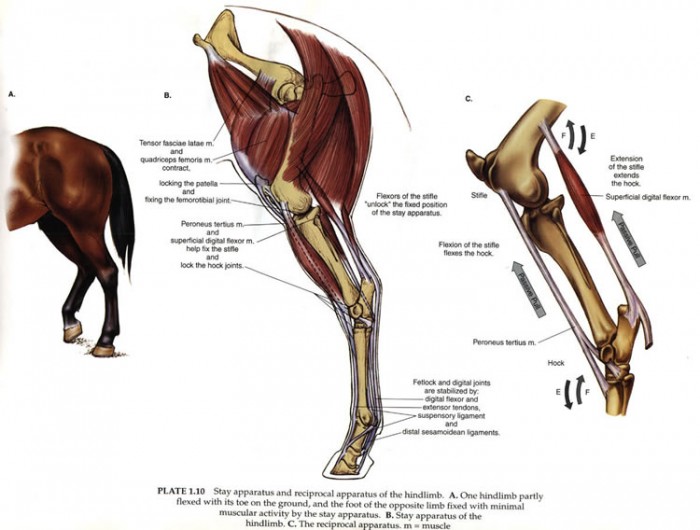
Rupture of the peroneus tertius tendon in 27 horses
The peroneus tertius tendon (PT) is an important part of the reciprocal apparatus and is responsible for simultaneous stifle and hock joint flexion. This study describes the history, diagnosis, treatment, and outcome of rupture of the PT in 27 horses. The cause of complete or partial rupture of the PT is usually trauma. The characteristic appearance of this injury can be seen as the horse walks forward and the stifle flexes, but the hock extends (see video below).
The medical records of 27 horses were reviewed. The characteristic clinical appearance of flexion of the stifle while the hock is extended was present in 23 horses. In 21 of 27 horses, the injury was caused by trauma, like falling down, slipping, caught in bars or running into a solid object. In 6 horses, the PT was severed due to a laceration, like caught in wire.
Treatment consisted of stall rest, with or without hand walking, for a mean of 16 weeks. 4 horses were euthanized. 22 horses were gradually returned to their previous level of exercise over a period of 8 weeks. During this time, 2 horses reinjured the PT. A 3rd horse reinjured the PT after 24 months of racing.
Premature return to exercise was the most likely reason for re-injury. The authors recommend to evaluate the healing of the tendon by ultrasound, because it may prevent premature return to exercise and re-injury.
> From: Koenig et al., Can Vet J 46 (2005) 503-506. All rights reserved to Canadian Veterinary Medical Association. Click here for the online summary.


